For the last fifty years in almost every part of the world except North America, the Transit range of commercial vans has been Ford’s bread and butter for work vehicles. More recently, they’ve been sold here in larger Transit and smaller Transit Connect form, and are available in both cargo and passenger formats. Recently, the DoubleClutch.ca Magazine editorial team got a chance to spend some time with a 2020 Ford Transit Connect Titanium Passenger Wagon – say that three times fast! This Turkish-made Transit Connect is a bit of a departure from what we usually test, but this is an area that we are happy to get into and review for the general public.
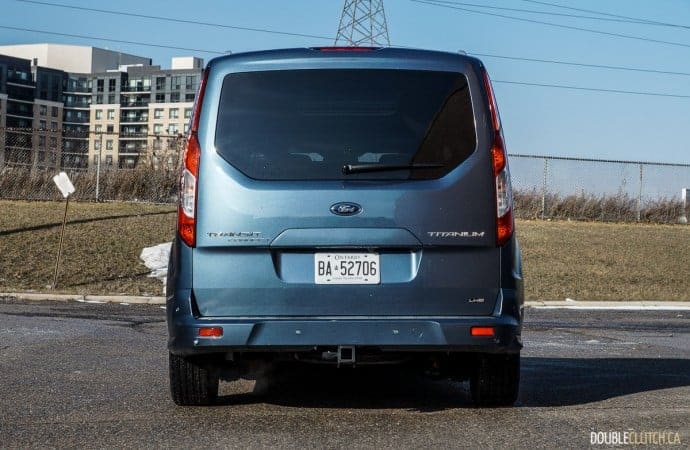
For hauling people, the base XL Passenger Wagon starts off at $32,055, but the Titanium trim tested begins at $39,025 and is available only in front-wheel drive. Standard Titanium features include 16-inch alloy wheels, pushbutton start, wireless phone charging, privacy glass, dual sliding doors with rear liftgate (lower trims can have two vertical cargo doors), power folding heated side mirrors, a blind spot warning system, high intensity discharge (HID) headlights, LED front fog lights, leather seating, and dual zone automatic climate control.

Options featured on Ford’s test vehicle include $784 for adaptive cruise control, $1,000 for Enhanced Park Assist, $1,750 for a fixed panoramic glass sunroof, $350 for remote start, and $260 for a front windshield electric defroster grid. At an as-tested price of $43,169, the Titanium version of the Transit Connect finds itself squarely in the sights of ordinary well-equipped minivans such as the Toyota Sienna, Honda Odyssey, Kia Sedona, and Chrysler Pacifica. Considering that the other contenders are bigger both inside and out, does the Transit Connect have what it takes to keep up?
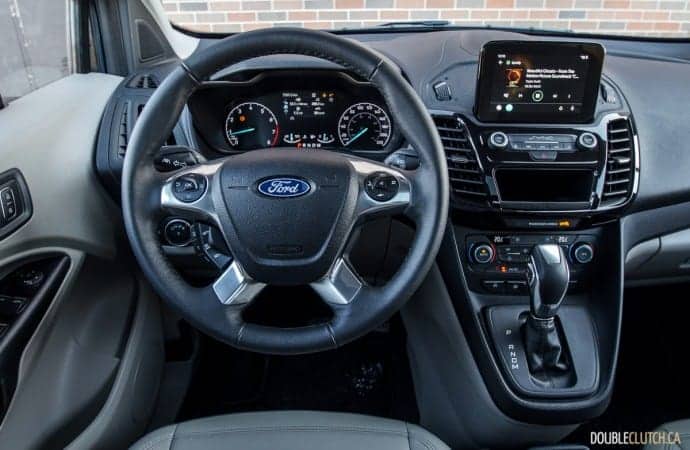
At 4,825 millimetres (190 inches) in length, the Transit Connect is about a foot shorter than the average minivan, and in Titanium form, and seats either six or seven people depending on whether the zero-cost second row captain’s chair option is selected. Cargo capacity behind the third row is 463 litres (16.4 cubic feet), and grows to 706 litres (24.9 cubic feet) with the third row folded. With the second row folded, maximum capacity behind the first row is 3,001 litres (106.0 cubic feet).
By comparison, a Honda Odyssey’s numbers are 929 (32.8), 2,452 (86.6), and 3,984 (140.7) respectively, which is a significant difference. With a minivan also winning on payload capacity, buyers should note that while the smaller exterior size can be advantageous, it comes at a price inside. Folding the Ford’s second and third rows of seating are also cumbersome to operate, and cannot be removed in the event that cargo needs to be carried.
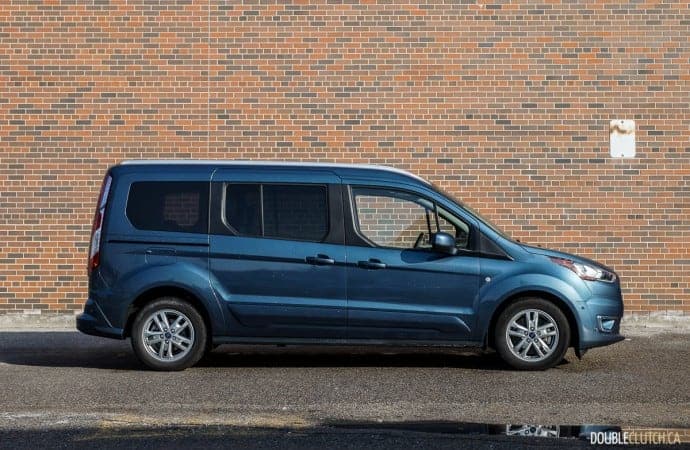
With its leather seating, the Transit Connect offers reasonable space for the first and second rows, although third row passengers will find things pretty tight. The seats are flat, the foam is hard, and is not the most comfortable; even in top trim, occupants are still reminded that they are in a commercial vehicle that often comes with fewer frills. Everything else aside, the interior is quite similar to the Escape small crossover, and does ergonomics fairly well. There’s enough of a combination of buttons and touch screen infotainment to make everything easy to use, and the inclusion of Apple CarPlay and Android Auto helps improve smartphone pairing and mirroring.
Powering all forms of Ford Transit Connect Passenger Wagon is a naturally aspirated 2.0-litre inline four engine. Peak output is 162 horsepower at 6,200RPM, coupled to 144 lb-ft. of torque at 4,500RPM. While these figures are not exactly stratospheric, they are also paired together with a hefty curb weight of 1,813 kilograms (3,998 pounds). This gives the Transit Connect a power to weight ratio that falls roughly in between a Nissan Micra and Mitsubishi Mirage, so there won’t really be any way to go anywhere in a hurry. Thankfully, an eight-speed automatic transmission provides frequent and necessary kickdowns for acceleration, and makes city driving much more bearable. On the highway, frequent trips to redline are required.
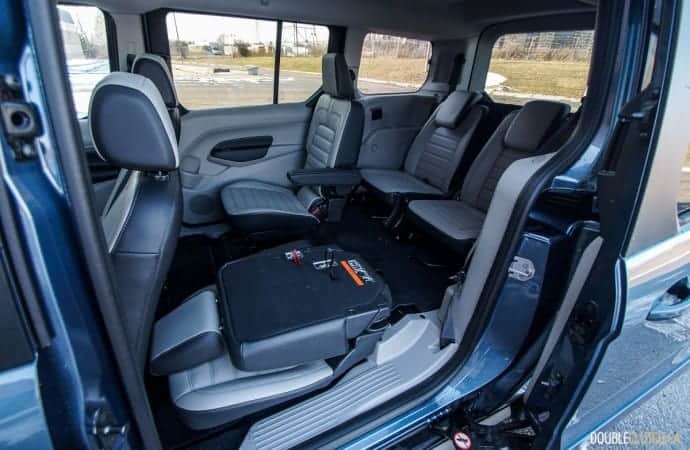
Fuel economy ratings for the Wagon come in at 9.9L/100KM in the city, and 8.2L/100KM on the highway. Given that the 2.0-litre engine needed to be wrung out to high RPM on a regular basis, observed consumption did considerably worse at 12.0L/100KM in mixed driving. Regular octane fuel is acceptable, and fuel capacity is 59.8 litres. By comparison, a previously tested Toyota Sienna and Honda Odyssey both did better in observed economy.
On the road, the Transit Connect Passenger Wagon does a pretty okay job with ride and noise control. While its maneuverability is most at home in the city, the ride is a bit crashy over potholes and expansion joints. Wind and road noise is fairly well controlled, and handling is a strong point in particular. Despite being a van, steering and turn-in response are closer to that of a smaller Focus or Escape as opposed to something much larger. Calling it fun would be a stretch, but it’s certainly much better than expected.
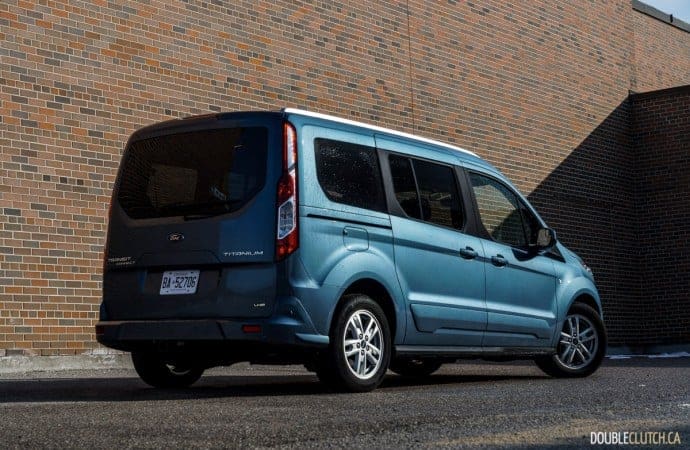
At the end of the day, the 2020 Ford Transit Connect Titanium Passenger Wagon comes in at an odd place in the market. For your money, a Honda Odyssey EX-L Navi, Toyota Sienna SE, or Chrysler Pacifica Touring cost more or less the same, and a fully-loaded Kia Sedona SX Tech is a couple thousand less. These minivans offer six cylinder engines with way more power and likely similar real-world fuel economy, and are considerably more practical on the inside to boot. For commercial use, such high duty cycles for the Transit Connect’s engine and transmission in day to day operation can’t theoretically be good for long term durability. With the fact that some components are shared with smaller, much lighter vehicles in the Ford family, that doesn’t bode well either. If you’re a betting person, go for a normal minivan that will see much less stress in its life.
See Also:
2019 Honda Odyssey Touring
2019 Chrysler Pacifica Hybrid
2018 Kia Sedona SX-L













































